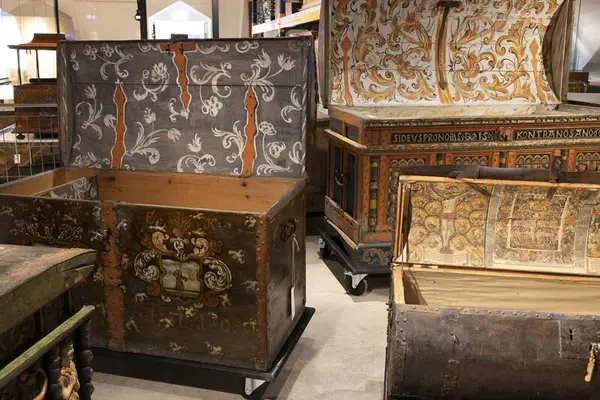- 1/1
Christian Andre Strand
The museum is much more than what is on view to the public. Our various exhibitions display selected artefacts, but in our workshops, museum storage and offices we are constantly workin to look after the more than 200 000 artefacts in our collections.
The Museum Attic is currently showing a selection of chests and boxes from around 1500 until the early 1800s, mainly from urban environments. They have been transported here from the museum’s off-site storage, and will later be moved to a new storage facility.
Chests and boxes
There are around 1600 chests and storage boxes of all kinds in Norsk Folkemuseum’s collections. For centuries a chest was the most important piece of furniture in a home. It was indispensable for travelling, for weddings, as a status symbol and for the storage of valuable objects. In towns and cities, chests were initially common, but in the 1700s they were gradually replaced by other furniture. In rural areas they continued to have an important function until well into the 1800s. Small objects such as candles, tools, jewellery and other personal possessions were stored in a variety of boxes and other containers.
Chests and boxes come in many shapes and sizes, and the terms used to describe them give us clues to their use and design, such as hope chest, bridal trousseau box, storage bench, travel trunk, steamer trunk, guild chest, grain bin, money box, ornate chest, candle box, scythe sheath, document box, America trunk and sewing box.
Today, chests and storage boxes have become less interesting as collectors’ items or articles for daily use. However, in the past they were extremely important, and they offer plenty of clues to many aspects of our cultural history.
